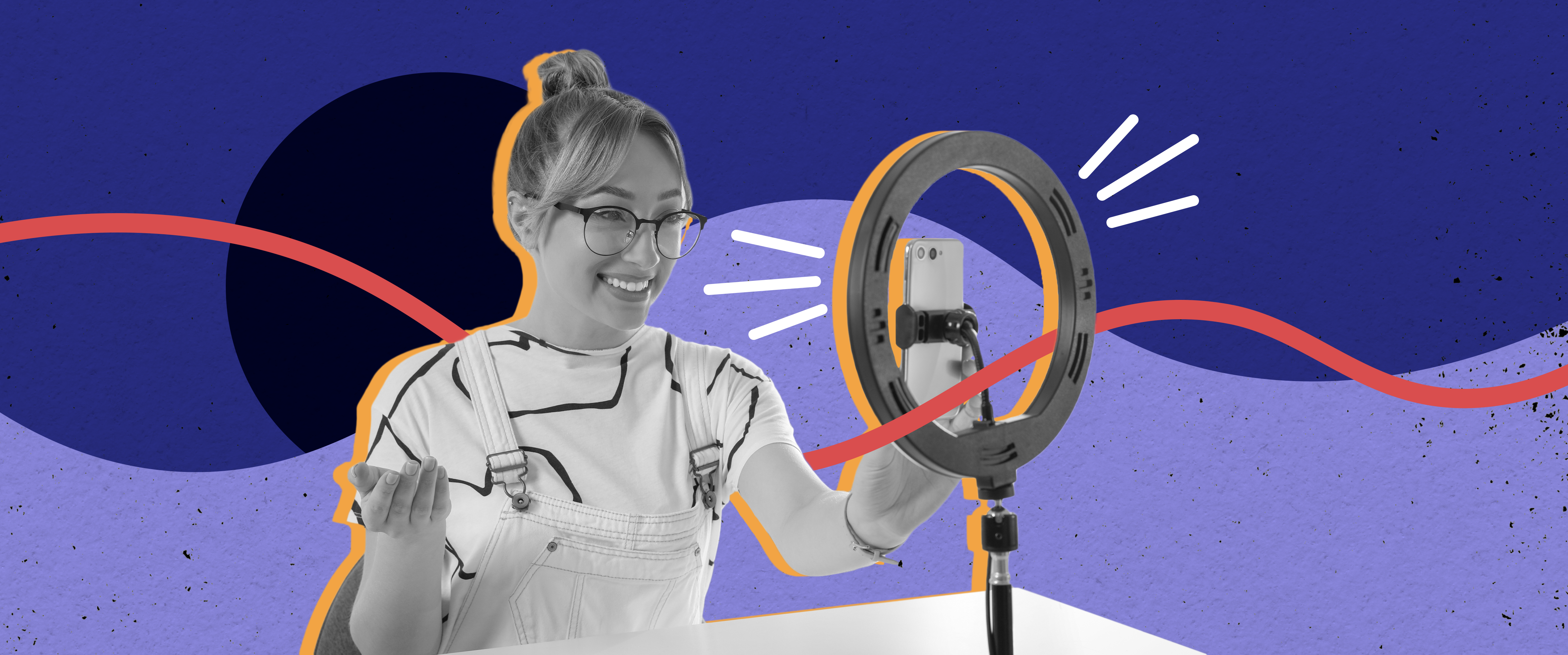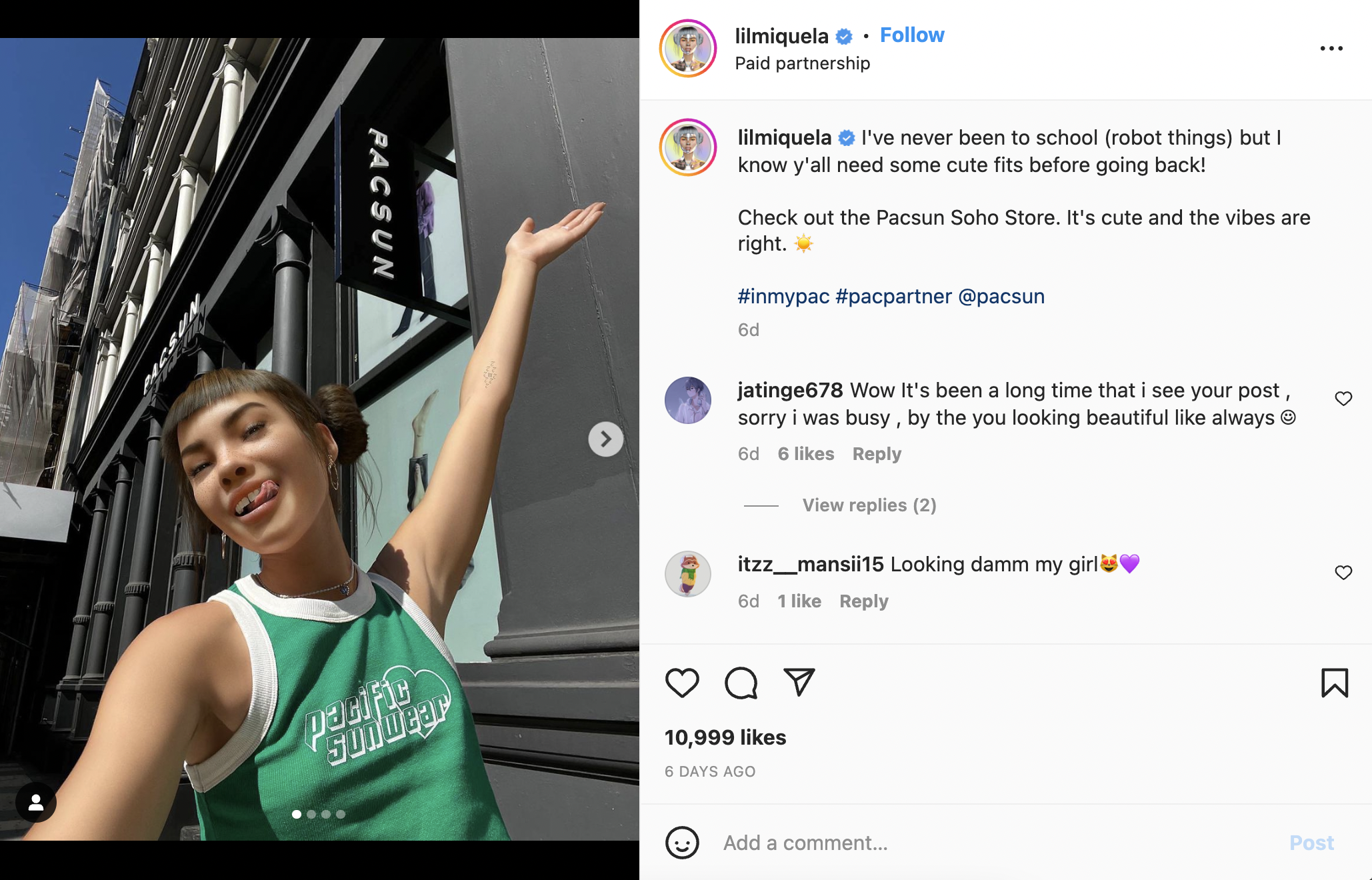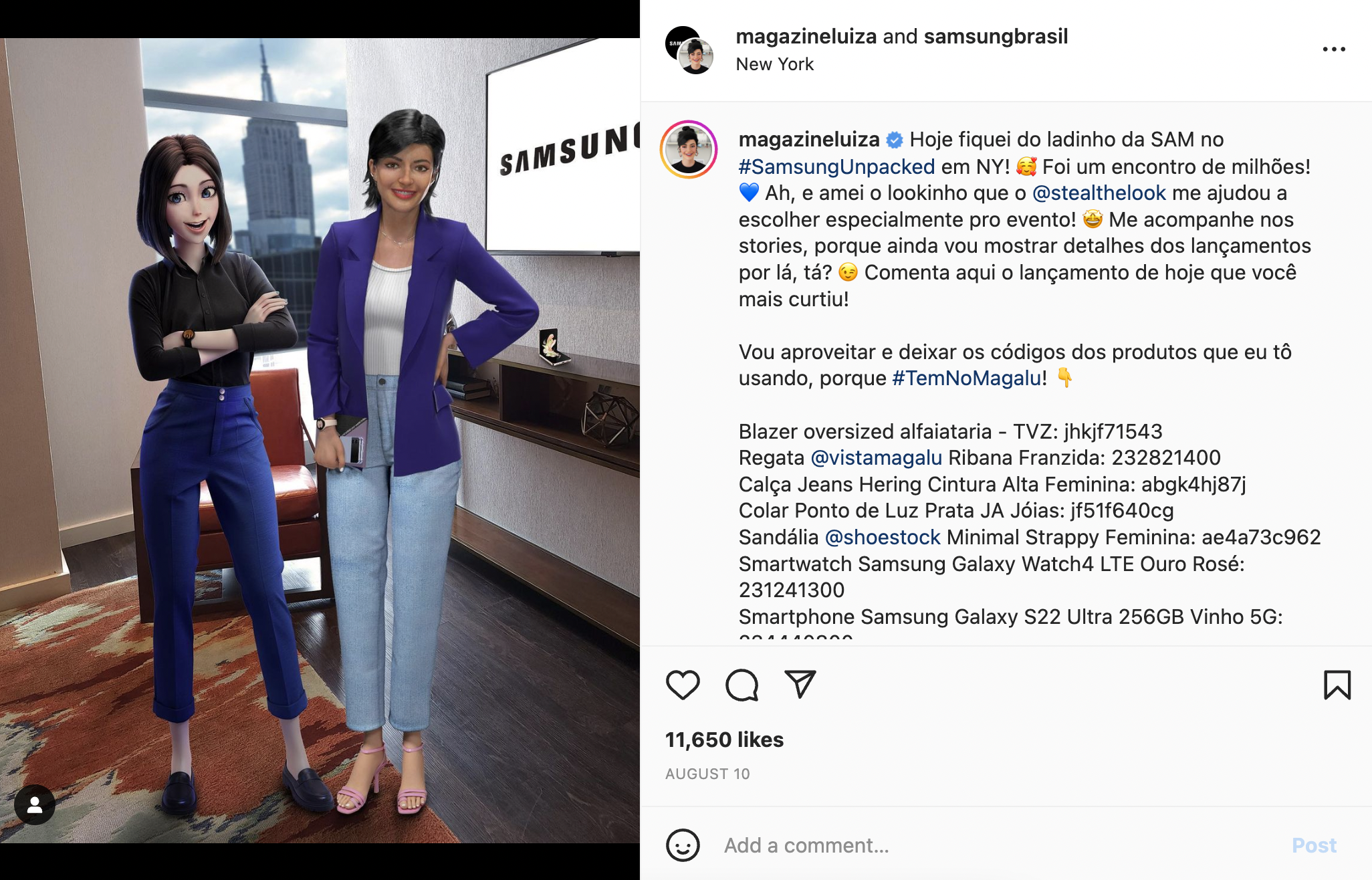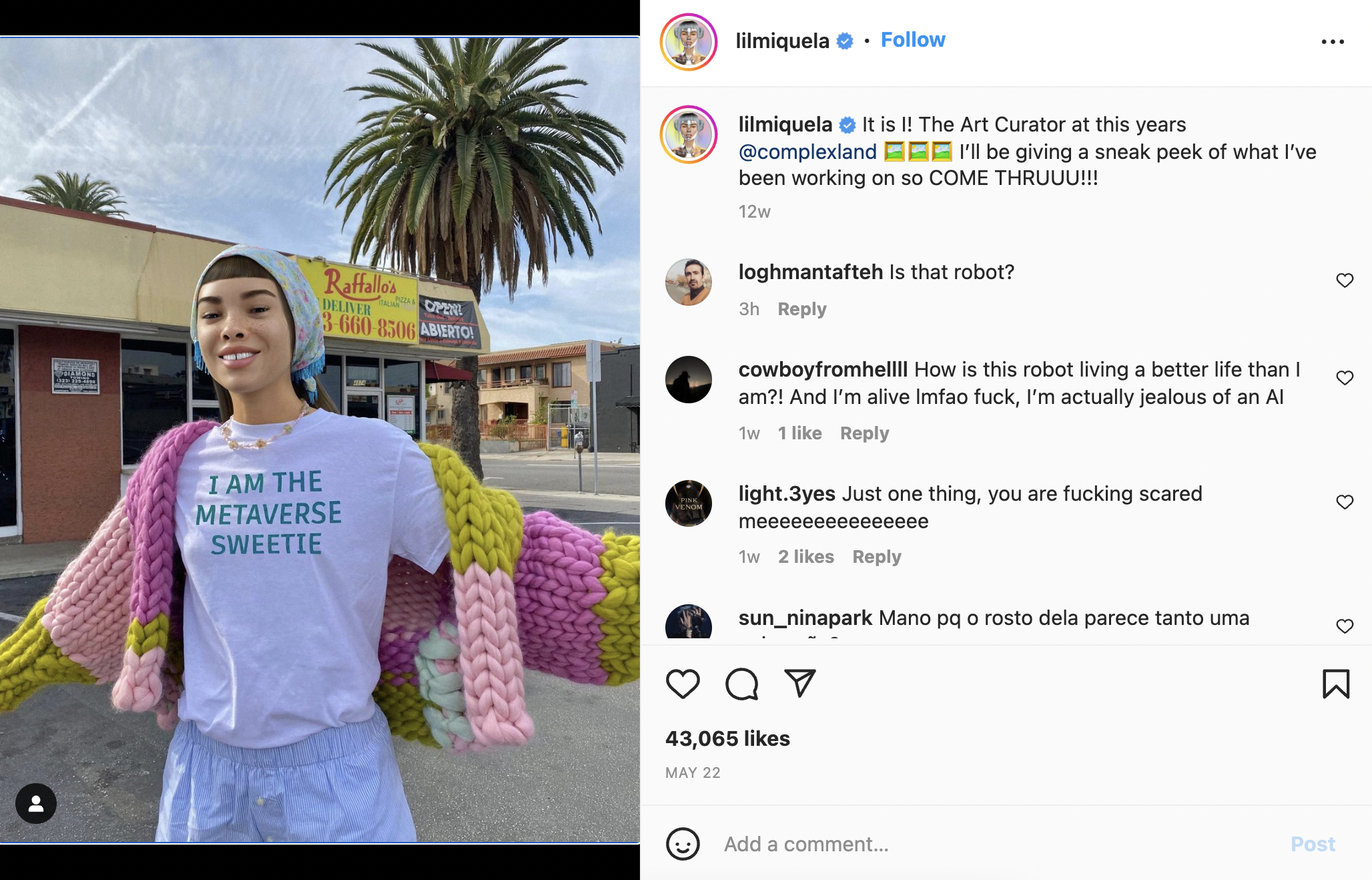They are ring-light equipped, flawlessly dressed, and now, AI-powered. I’m talking about influencers, the people who sell you on the next fashion trend or travel destination in your feeds. But now, the “people” part of that equation is expanding to include virtual, AI-powered personas.
Meet Miquela, a 19-year-old living in Los Angeles, California. At a quick glance, her feed looks familiar to anyone who has dabbled in influencer marketing. She’s on the latest fashion trends, touting partnership deals with brands like Prada, and takes part in pop culture trends like showing off her teenage dirtbag photos.
I won this trend 🥴 pic.twitter.com/YBs30h5S02
— lil miquela (@lilmiquela) August 9, 2022
The difference? She’s not real. Miquela is a self-described robot, created by the co-founders of an American tech startup. She has had relationships (and breakups), traveled around the country, and even released her own music — but these experiences are all engineered for her. Miquela is one of the growing number of “virtual influencers” on social media, artificial personas who are built via computer graphics software and intermixed with real-life photography to post about their “lives” and to build a following on their social media accounts.
These accounts are usually managed by multiple people who work behind the scenes to create the virtual persona’s posts (sometimes voice and motion acting for them), interact with fans, and work with brands to feature products to their audiences. Those audiences are growing too, according to experts, as younger users spend more and more of their time online. They don’t mind interacting with virtual personas, and it shows in the number of followers (and engagements) these personas get.
Miquela has 3 million followers on Instagram, while some of her counterparts like Lu do Magalu from Brazil have nearly double that amount commenting, liking and sharing their content. Countries like South Korea are seeing a growing number of these virtual influencers gain national attention, including being hired to model for various companies. One influencer, managed by Sidus Studio X, is expected to make $1.52 million in profit this year, according to CNN.
There is obviously a lot of profit in creating a virtual influencer, but what about for the brands hiring them? Does hiring a virtual influencer actually work, and is it better than hiring a real, not-digitally-rendered person?
Like with real influencers, there are pros and cons to partnering up and collaborating.
First up, there’s the question of authenticity: will followers be persuaded to try out a new makeup product or new restaurant because a digitally-rendered person (who can’t actually try the product) recommends it? We may trust our favorite makeup tutorialist on YouTube to tell us what best moisturizer to use, but extending that trust to a virtual persona may be pushing the limits of what users are willing to believe.
Questions around their audiences have also come up: are the millions of followers actual people, or are those numbers manipulated via bot account followers? To some extent, you have that same question come up for real influencers as well, and it’s something you need to consider when reviewing who you want to partner with.
And just like with real influencers, fitting your product into a virtual influencer’s content has to feel seamless. So, choosing them to try out your new makeup line might be a stretch — but brands seem to have found success in sharing new fashion products and travel destinations via these virtual personas.
There are more pros and cons to consider (read this great Forbes article for more), but what really excites me about these virtual influencers is their seamless integration into the metaverse and into NFTs. As AI becomes more sophisticated, so will these virtual personas. And as the metaverse grows, you would be able to interact with them in their own virtual world and own part of their image through NFTs.
Being able to move into the metaverse with an already formed virtual persona is a major advantage. It opens so many doors as we move further and further into augmented and virtual reality, allowing brands to develop stronger, more emotional connections with their younger, tech-savvy consumers. We also see influencers like Miquela start branching out into NFTs with images of themselves as virtual beings, creating another space for brand relationship building.
Virtual influencers have their advantages, for the right products and for the right audience. As with any influencer strategy, it’s all about the trade-offs. So, get to know the virtual influencers near you—they could be your brand’s next spokesperson.






